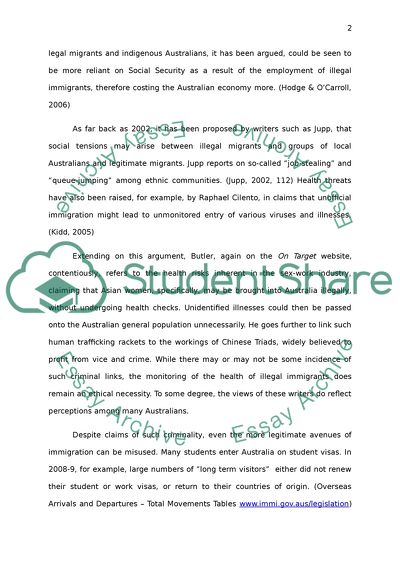Cite this document
(The Hidden Costs of Illegal Immigration into Australia Coursework, n.d.)
The Hidden Costs of Illegal Immigration into Australia Coursework. https://studentshare.org/social-science/1731651-australian-illegal-immigration-hidden-cost
The Hidden Costs of Illegal Immigration into Australia Coursework. https://studentshare.org/social-science/1731651-australian-illegal-immigration-hidden-cost
(The Hidden Costs of Illegal Immigration into Australia Coursework)
The Hidden Costs of Illegal Immigration into Australia Coursework. https://studentshare.org/social-science/1731651-australian-illegal-immigration-hidden-cost.
The Hidden Costs of Illegal Immigration into Australia Coursework. https://studentshare.org/social-science/1731651-australian-illegal-immigration-hidden-cost.
“The Hidden Costs of Illegal Immigration into Australia Coursework”. https://studentshare.org/social-science/1731651-australian-illegal-immigration-hidden-cost.


